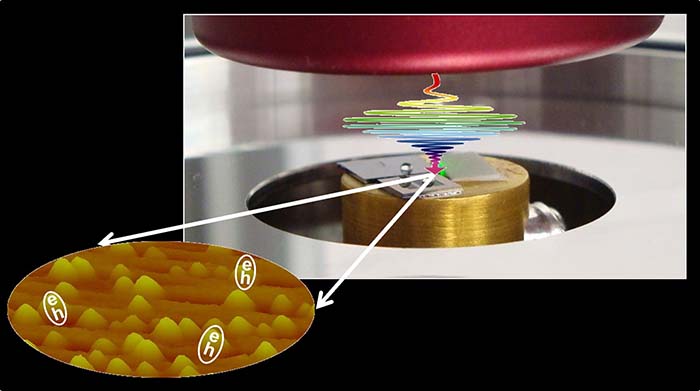
Research
Our group develops next generation technologies that exploit quantum mechanical effects, including quantum emitters, quantum networks, solar cells, photonic and spintronic devices. We do this by using ultrafasts lasers (lasers that produce pulses with a duration of 100 fs) to develop quantum control techniques and to study extremely fast dynamics in materials. Ultrafast pulses may be used to study extremely rapid events, such as the motion of electrons in solids, and can be engineered to carry out optimized quantum gates for quantum emitter and networks. A few of our current research areas are described below.
Quantum State Engineering
Optical pulse shaping provides a versatile approach to tailoring the Hamiltonian governing the interaction of light with matter. In our research group, we use this to engineer the trigger pulse for quantum light sources and to realize arbitrary qubit manipulations. The central idea is to manipulate in an arbitrary way the phase of the control laser pulse to achieve a desired final quantum state of the system. These experiments are done on solid-state qubit systems in semiconductors, including quantum dots in nanowire structures and transition-metal dichalcogenide emitters. Such structures form the building blocks for future scalable quantum networks and quantum light sources for photonic computing and quantum cryptography.
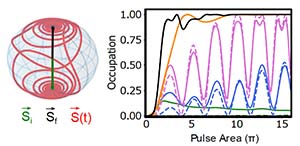 |
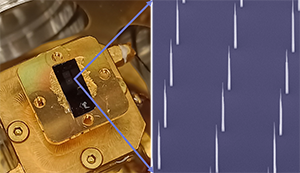 |
 |
NARP Scheme for Triggering Single Photon Emitters | Nanowire Quantum Light Sources | Quantum State Inversion in Solid-State Qubits |
Carrier Dynamics and Transport in 2D Quantum Materials
2D materials are a special class of semiconductors that are a single monolayer thick. These materials may be exfoliated from 3D crystals using scotch tape and transferred onto a substrate of choice. They are of interest for applications such as transistors and photonic circuits due to their unique optical, electrical and mechanical properties. Some materials such as 2D perovskites possess strong spin-orbit coupling and Rashba effects, making them suitable candidates for spintronic and quantum materials. Our group is studying carrier spin dynamics and transport in these systems using transient absorption microscopy and four-wave mixing spectroscopy.
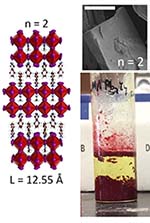 |
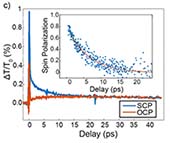 |
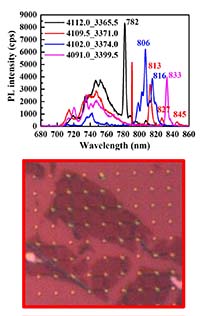 |
2D Perovskite Single Crystals | Spin dynamics in 2D Perovskite | Transition-metal Dichalcogenide epilayer on Pillars | Scanning of probe laser relative to Pump laser in TAM Microscopy |
Ultrafast Optical Studies of Perovskite Photovoltaic Materials
The organic-inorganic perovskite class of semiconductors has recently gained interest for the development of low-cost solar cells. Unlike silicon solar cells, perovskite cells can be solution processed, dramatically reducing the cost of fabrication, and tandem cells involving silicon and/or solar integrated building materials may be possible. Our research group is applying a variety of ultrafast techniques to studying these materials. For example, we use femtosecond four-wave mixing spectroscopy to measure the quantum coherent response to learn how to improve solar cell performance by reducing carrier scattering.
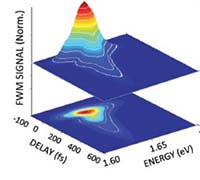 |
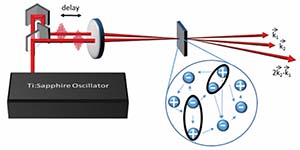 |
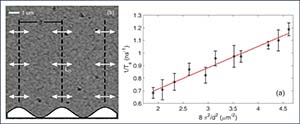 |
Many-body effects and Observation of Exciton | Quantum Coherent Dynamics using Four-wave mixing | Optically Detected Diffusion lengths in MAPbI3 for Solar Cells |

